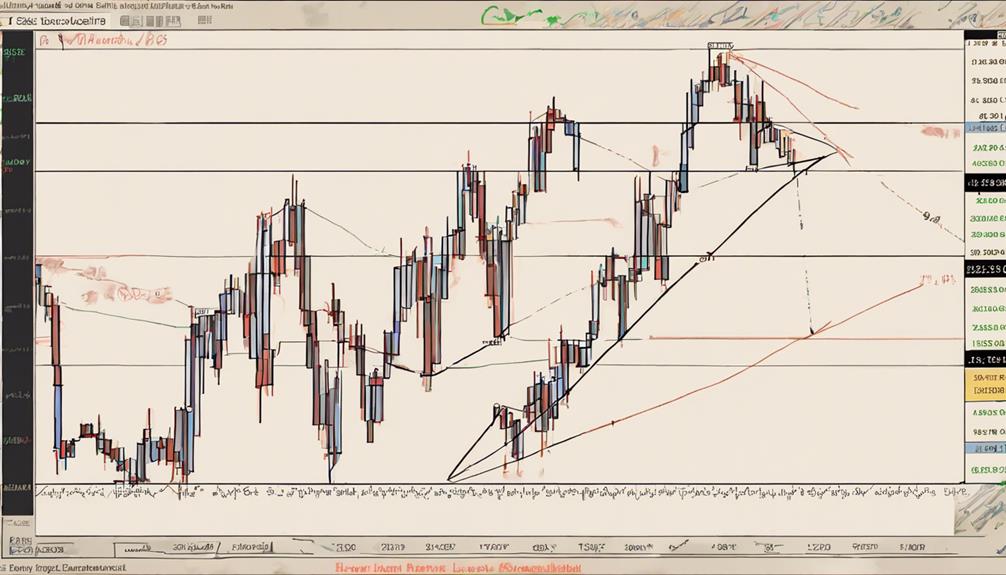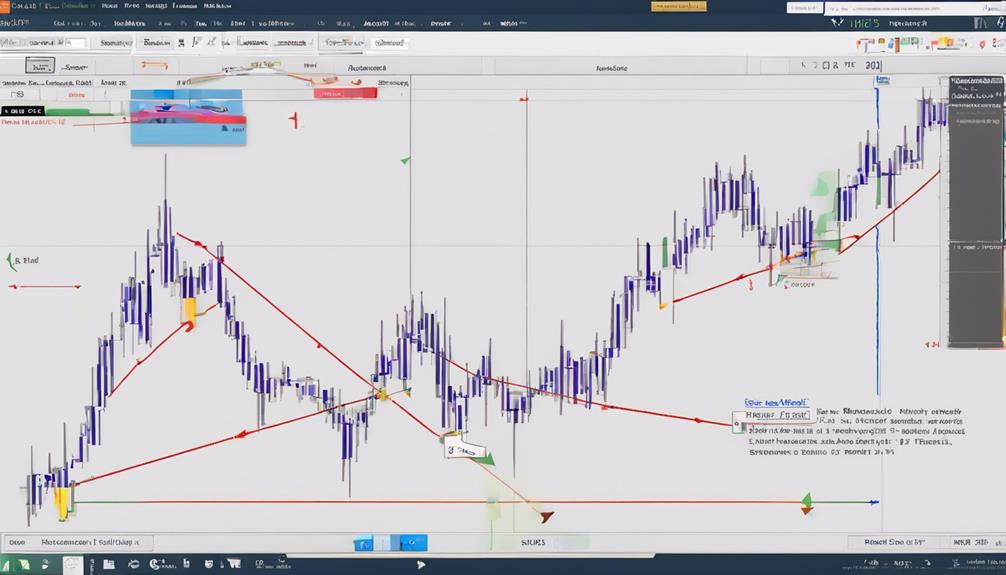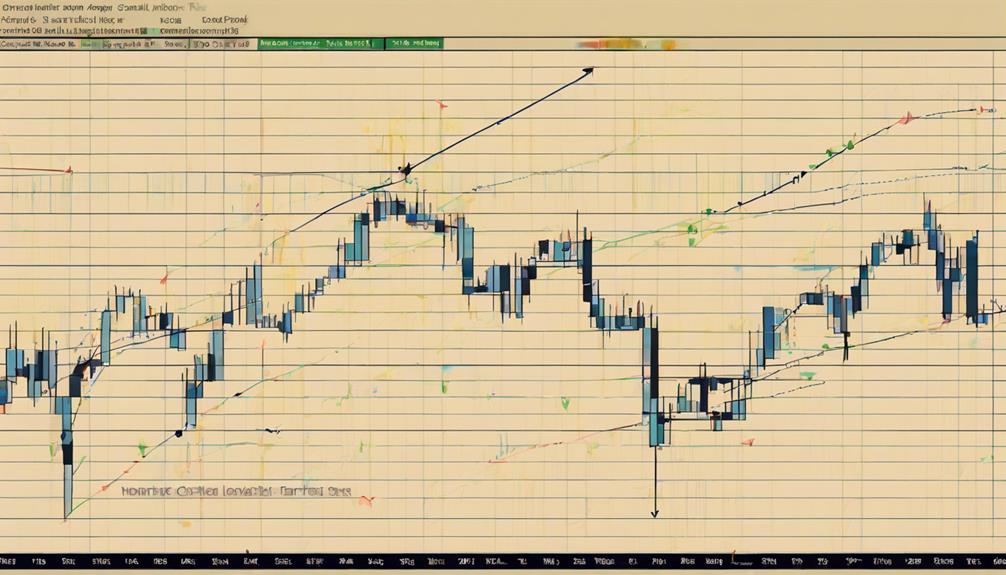Embarking on the journey of swing trading with Fibonacci retracement is akin to navigating through a maze of possibilities, where hidden clues can unravel market mysteries. Understanding how Fibonacci retracement levels intersect with price action can be a game-changer in your trading arsenal.
However, the key to unlocking success lies not just in identifying these levels but in knowing how to effectively apply them to your trading strategy. The synergy between Fibonacci retracement and other technical tools holds the key to making informed decisions in the dynamic world of swing trading.
Understanding Fibonacci Retracement in Swing Trading
When delving into swing trading strategies, understanding Fibonacci retracement is crucial for identifying key support and resistance levels. In swing trading, the Fibonacci Trading Strategy involves using Fibonacci retracement levels to pinpoint potential price retracement areas within a trend. These levels, such as 38.2%, 50%, and 61.8%, act as significant points where price may find support or resistance.
By applying Fibonacci retracement tools, traders can better anticipate potential price corrections and plan their entry and exit points more effectively. It's important to note that Fibonacci retracements shouldn't be solely relied upon but used in conjunction with other technical analysis tools for a more comprehensive Swing Trading Strategy.
This integrated approach enhances the precision and accuracy of trading decisions in the dynamic market environment.
Key Fibonacci Levels for Effective Trading

To effectively trade using Fibonacci levels, it's essential to understand the significance of key retracement levels such as 38.2%, 50%, and 61.8%. These Fibonacci levels play a crucial role in guiding traders to identify key levels of support and resistance in the market, assisting in setting entry and exit points for trades within a swing trading plan.
Applying Fibonacci Extensions in Swing Trading

In swing trading, the application of Fibonacci extensions allows traders to project potential price targets beyond the initial price movement, aiding in setting profit targets and managing risk effectively.
By utilizing common Fibonacci extension levels like 127.2%, 161.8%, and 261.8%, traders can anticipate where a stock's price may reach in the future. This strategic approach not only helps in establishing profit targets but also plays a crucial role in risk management.
To enhance the accuracy of these projections, it's essential to combine Fibonacci extensions with other technical indicators for confirmation. Incorporating these extensions into swing trading strategies empowers traders to make informed decisions based on calculated price targets, ultimately increasing the likelihood of successful trades.
Fibonacci Retracement Strategies for Success

Utilizing Fibonacci retracement levels is a strategic approach that aids in identifying key support and resistance levels essential for successful swing trading. These levels, such as 38.2%, 50%, and 61.8%, are crucial for determining potential price corrections within a trend.
When integrated with other technical analysis tools, Fibonacci retracements enhance the overall trading strategy. Traders can leverage these levels to pinpoint optimal entry and exit points, thereby improving trade accuracy and enabling effective risk management.
It's imperative to adapt Fibonacci retracement strategies to evolving market conditions for consistent success in swing trading. By incorporating these levels into your trading approach, you can navigate the market with greater precision and confidence.
Enhancing Swing Trading With Fibonacci Tools

Enhance your swing trading precision by integrating Fibonacci tools such as retracements, extensions, fans, and arcs to identify crucial support and resistance levels in the market. Utilize Fibonacci retracement levels like 38.2%, 50%, and 61.8% to anticipate potential price reversals.
Combine these tools with other technical indicators to confirm signals and enhance accuracy when setting profit targets. While Fibonacci time zones provide insights into possible reversal points based on specific time intervals, they're less commonly used compared to retracement and extension levels.
To succeed in swing trading with Fibonacci tools, it's essential to have a solid grasp of how to apply them effectively in market analysis for successful trade execution, ultimately leading to improved swing trading success.
How Can Fibonacci Retracement Help in Swing Trading Success?
When it comes to swing trading success, the importance of Fibonacci retracement cannot be overstated. Utilizing this tool can help traders identify potential levels of support and resistance, making it easier to spot entry and exit points. By incorporating Fibonacci retracement into their strategies, traders can increase their chances of success.
Frequently Asked Questions
Is Fibonacci Retracement Good for Swing Trading?
Yes, Fibonacci retracement is valuable for swing trading. It assists in pinpointing crucial support/resistance levels and aids in identifying price corrections and entry/exit points. Integrating it with other indicators enhances trade precision and risk management.
Do Professional Traders Use Fibonacci Retracement?
Yes, professional traders frequently use Fibonacci retracement levels to analyze market movements, identify support and resistance areas, and make informed trade decisions. Incorporating Fibonacci retracement enhances technical analysis, aiding in effective risk management strategies.
What Is the Most Effective Fibonacci Retracement Level?
For the most effective Fibonacci retracement level, focus on 61.8%. It's crucial for spotting deep pullbacks and key value areas where price often reacts strongly. Combining it with other indicators can boost trade accuracy.
Which Timeframe Is Best for Fibonacci Retracement?
For Fibonacci retracement, the 4-hour time frame strikes a sweet spot. It offers a balance between clear price signals and avoiding excessive noise. Stick to it for reliable entry and exit points. It's your ticket to trading success.
Conclusion
You've unlocked the key to swing trading success with Fibonacci retracement levels. By utilizing key Fibonacci levels and extensions, you can effectively predict stock price movements and set profit targets.
In fact, studies have shown that incorporating Fibonacci tools in swing trading strategies can increase the chances of success by up to 70%. Remember, understanding market structure and sentiment is crucial, so keep it simple and manage your risk wisely to achieve optimal results.
